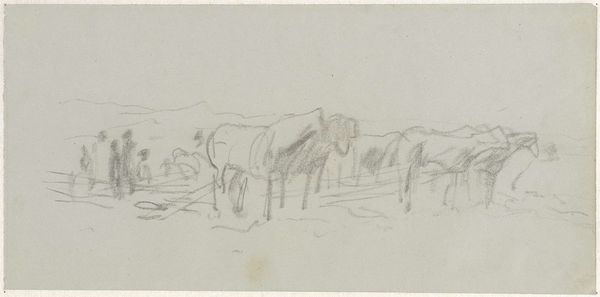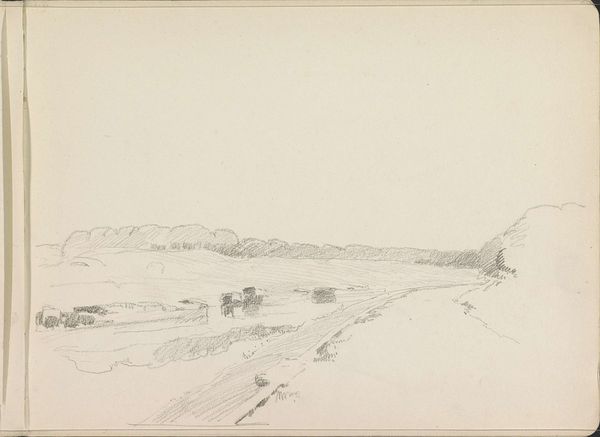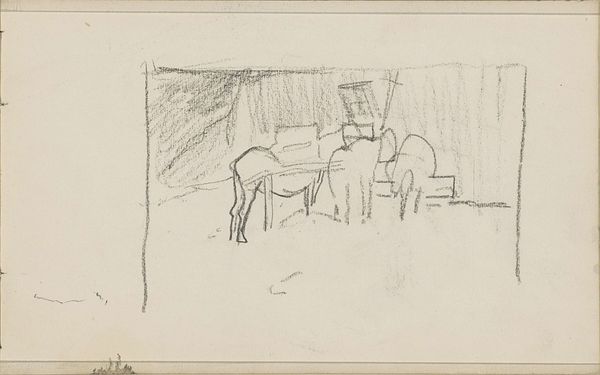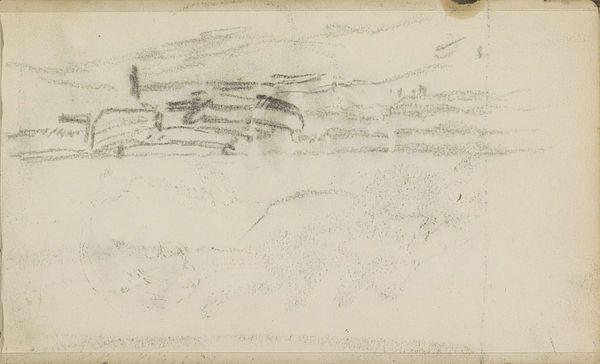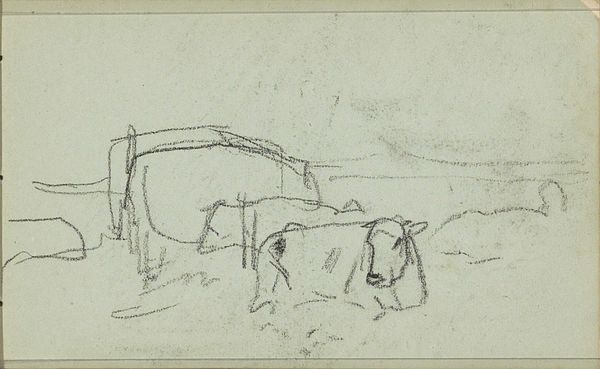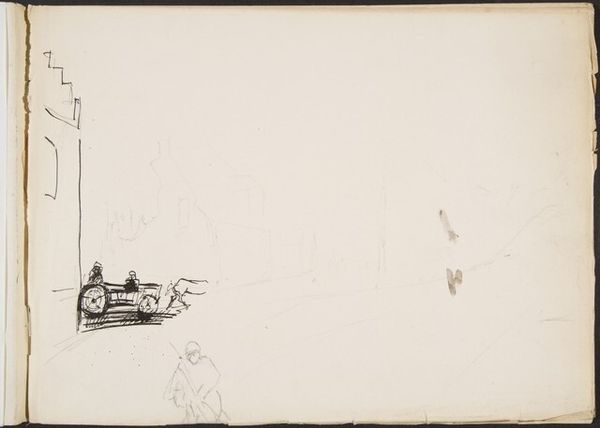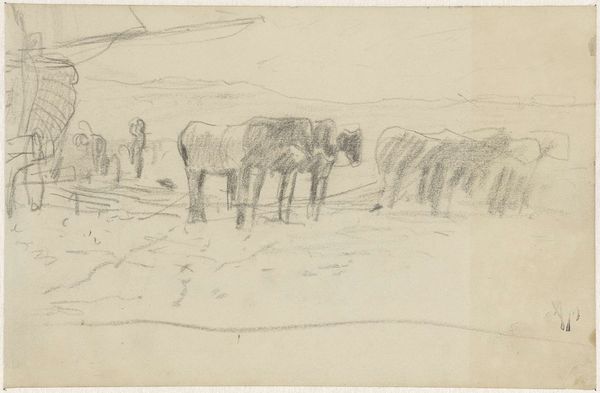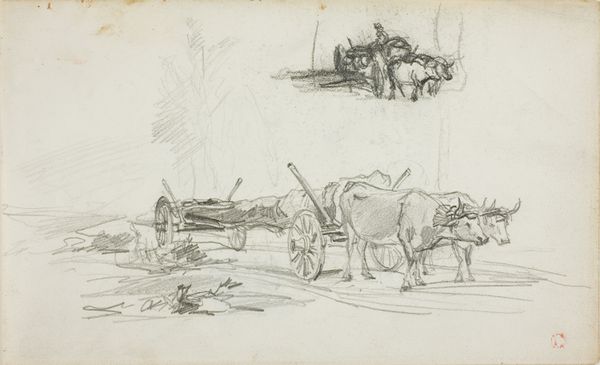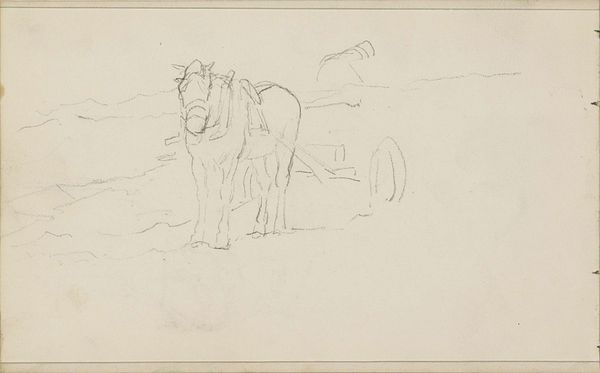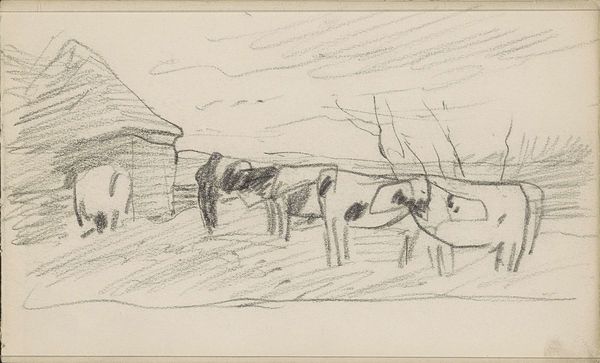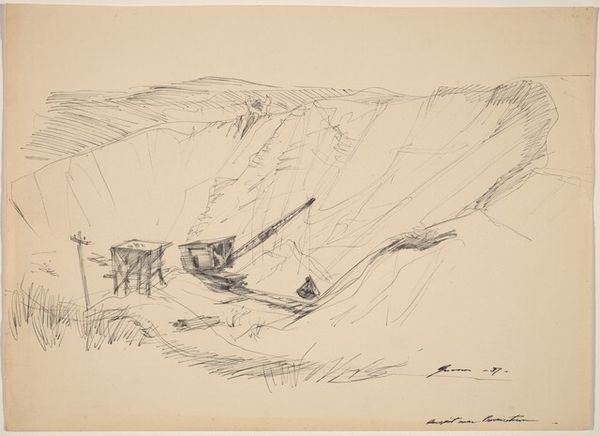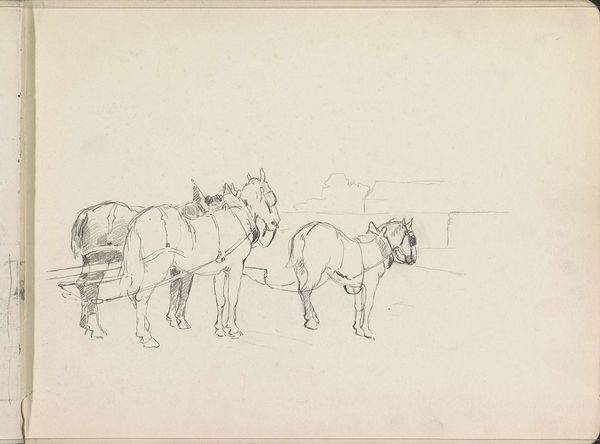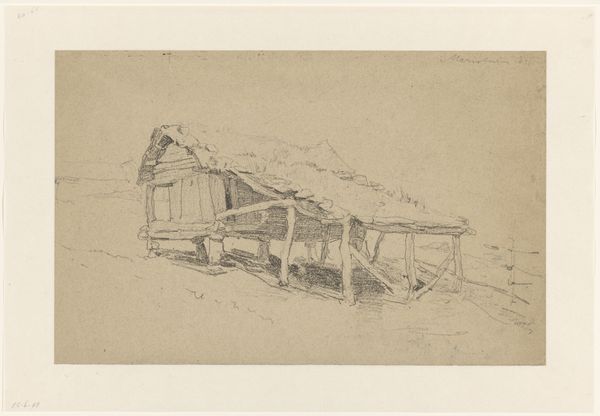
drawing, pencil
#
drawing
#
pencil sketch
#
landscape
#
figuration
#
pencil
#
horse
#
realism
Copyright: Rijks Museum: Open Domain
Curator: Let's discuss this delicate pencil sketch by Cornelis Vreedenburgh, titled "Grazend paard en een paardenkar in een landschap," dating roughly between 1890 and 1946. What strikes you immediately about it? Editor: Its simplicity, almost starkness. The pale ground and the delicate lines create a sense of quiet and the unadorned. The materiality feels quite intimate; one senses the hand of the artist at work on paper. Curator: Indeed. Vreedenburgh's approach emphasizes line and form. Notice how he delineates the horses and the cart. The lines are confident and minimal but very strategic, focusing on outlining shape to provide only necessary details. We do not observe an abundance of details regarding the inner landscape itself, it remains mostly without feature. What purpose may lie behind that lack? Editor: It's suggestive of the laborers relationship to that specific land. This wasn't some idyllic pastoral scene. One can see an absence of Romantic notions; this appears to be simply, hard work rendered almost fleetingly. The sketch speaks to the everydayness of agrarian life and labor. Consider the position of the horse itself, weighed down by the yoke attached to the paardenkar. Curator: An astute observation, certainly drawing the viewer to examine its symbolic purpose beyond just being part of the greater landscape. If you closely regard the front most horse you'll note it grazing leisurely in comparison. Yet there are also moments where we might consider how Vreedenburgh uses techniques such as realism and landscape, to almost imbue the landscape with as much 'realism' as its object - although very sparse in its visual expression! Editor: It seems as if Vreedenburgh wants to reveal a landscape born of process, materiality, labor, but not necessarily something of glamour, but something perhaps mundane to the working figure itself. But perhaps this simple sketch opens it to questions that would be impossible with fully worked pieces, a conversation or meditation on the working landscape itself! Curator: Perhaps that incompleteness fosters a dialogue with the viewer as an intrinsic form to understand that greater question more subjectively. It allows one to not see through a vision, but create your own. Editor: Yes, I think this seemingly quick sketch reveals a depth of thinking about production, environment, and existence itself when one takes the time to appreciate and reflect.
Comments
No comments
Be the first to comment and join the conversation on the ultimate creative platform.
